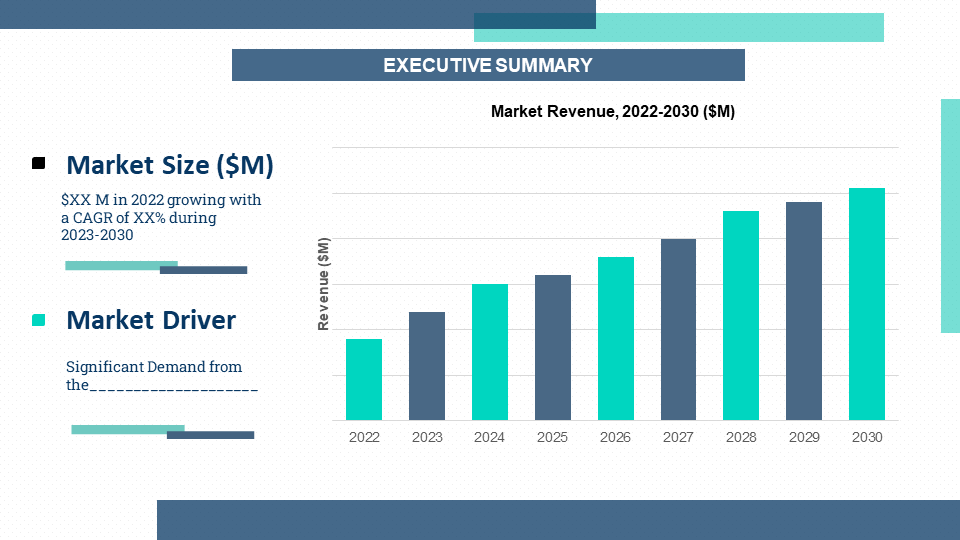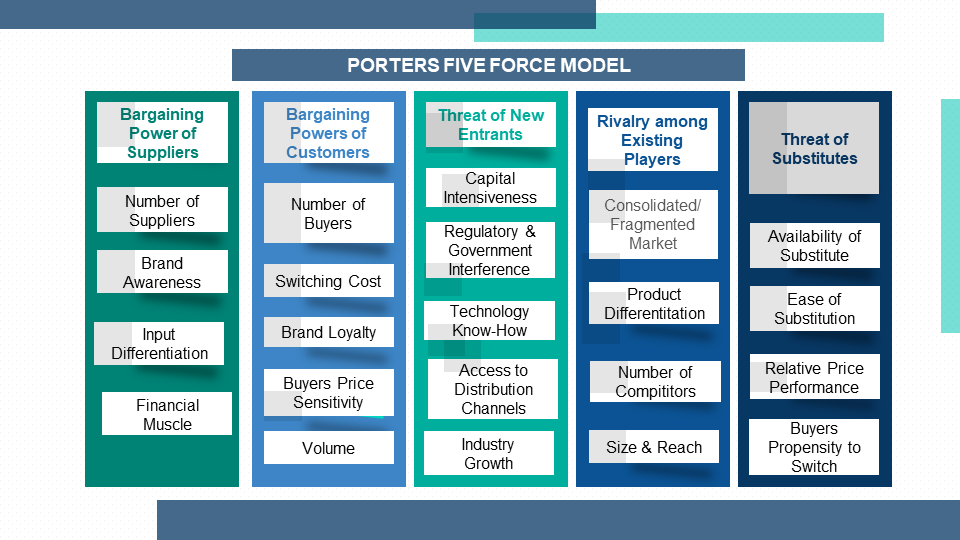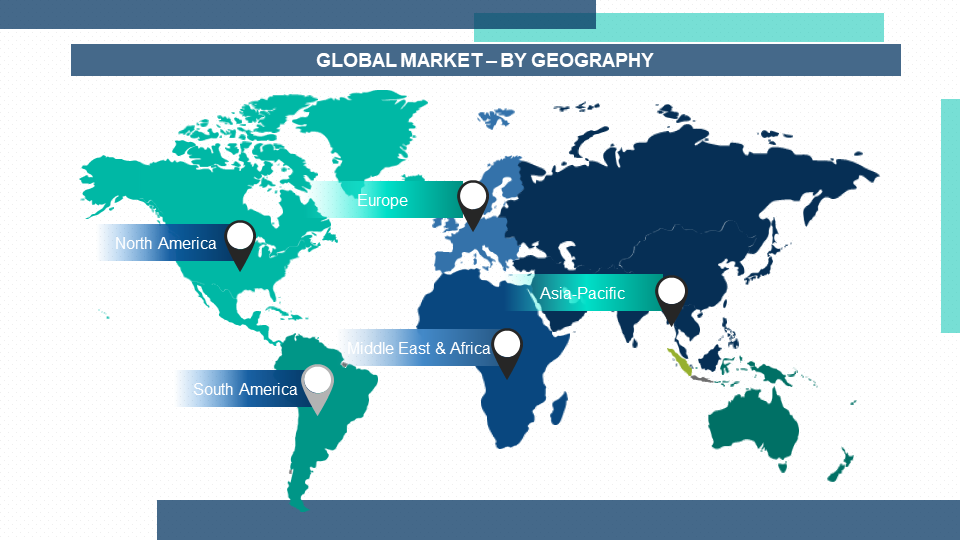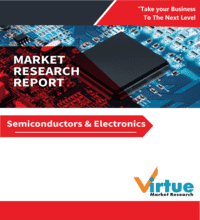





Chapter 1. AUGMENTED AND VIRTUAL REALITY MARKET– Scope & Methodology
1.1. Market Segmentation
1.2. Assumptions
1.3. Research Methodology
1.4. Primary Sources
1.5. Secondary Sources
Chapter 2. AUGMENTED AND VIRTUAL REALITY MARKET– Executive Summary
2.1. Market Size & Forecast – (2023 – 2030) ($M/$Bn)
2.2. Key Trends & Insights
2.3. COVID-19 Impact Analysis
2.3.1. Impact during 2023 – 2030
2.3.2. Impact on Supply – Demand
Chapter 3. AUGMENTED AND VIRTUAL REALITY MARKET– Competition Scenario
3.1. Market Share Analysis
3.2. Product Benchmarking
3.3. Competitive Strategy & Development Scenario
3.4. Competitive Pricing Analysis
3.5. Supplier - Distributor Analysis
Chapter 4. AUGMENTED AND VIRTUAL REALITY MARKET- Entry Scenario
4.1. Case Studies – Start-up/Thriving Companies
4.2. Regulatory Scenario - By Region
4.3 Customer Analysis
4.4. Porter's Five Force Model
4.4.1. Bargaining Power of Suppliers
4.4.2. Bargaining Powers of Customers
4.4.3. Threat of New Entrants
4.4.4. Rivalry among Existing Players
4.4.5. Threat of Substitutes
Chapter 5. AUGMENTED AND VIRTUAL REALITY MARKET- Landscape
5.1. Value Chain Analysis – Key Stakeholders Impact Analysis
5.2. Market Drivers
5.3. Market Restraints/Challenges
5.4. Market Opportunities
Chapter 6. AUGMENTED AND VIRTUAL REALITY MARKET– By Technology
6.1. AR technology:
6.1.1. Marker-based AR technology:
6.1.1.1. Active marker
6.1.1.2. Passive marker
6.1.2. Markerless AR technology
6.1.2.1. Model-base tracking
6.1.2.2. Image processing based tracking
6.1.2.3. Anchor-based AR
6.2. VR Technology
6.2.1. Non-immersive technology
6.2.2. Semi-immersive and fully immersive technology
Chapter 7. AUGMENTED AND VIRTUAL REALITY MARKET– By Offering
7.1. Hardware
7.1.1. Sensors
7.1.1.1. Accelerometers
7.1.1.2. Gyroscopes
7.1.1.3. Magnetometers
7.1.1.4. Proximity sensors
7.1.2. Semiconductor components:
7.1.2.1. Controllers and processors
7.1.2.2. Integrated Circuits
7.1.3. Display and projectors
7.1.4. Position trackers
7.1.5. Cameras
7.1.6. Others
7.1.6.1. Computers
7.1.6.2. Video generators and combiners
7.2. Software
7.2.1. Software development kits
7.2.2. Cloud-based servies
Chapter 8. AUGMENTED AND VIRTUAL REALITY MARKET– By Device
8.1. AR devices
8.1.1. Head-mounted displays
8.1.1.1. AR smart glasses
8.1.1.2. Smart helmets
8.1.2. Heads-up display
8.2. VR devices
8.2.1. Head-mounted displays
8.2.2. Gesture-tracking devices
8.2.3. Displays and projectors
Chapter 9. AUGMENTED AND VIRTUAL REALITY MARKET– By Application
9.1. Consumer
9.1.1. Gaming
9.1.2. Sports
9.1.3. Entertainment
9.1.3.1. Theme parks
9.1.3.2. Museums
9.1.3.3. Art exhibitions and gelleries
9.2. Commercial
9.2.1. Retail and e-commerce
9.2.1.1. Beauty and cosmetics
9.2.1.2. Apparel fitting
9.2.1.3. Jewellery
9.2.1.4. Grocery shopping
9.2.1.5. Footwear
9.2.1.6. Furniture
9.2.2. Travel and tourism
9.2.3. E-learning
9.3. Enterprise
9.3.1. Manufacturing
9.4. Healthcare
9.4.1. Surgery
9.4.2. Fitness management
9.4.3. Patient care management
9.4.4. Pharmacy management
9.4.5. Medical training and education
9.4.6. Radiology
9.5. Aerospace and Defence
9.6.Automotive
9.7. Energy
9.8. Others
9.8.1. Construction
9.8.2. Agriculture
9.8.3. Telecom/IT services
9.8.4. Transportation and Logistics
9.8.5. Public Safety
Chapter 10. AUGMENTED AND VIRTUAL REALITY MARKET– By Enterprise
10.1 Small enterprise
10.2. Medium enterprise
10.3. Large enterprise
Chapter 11. AUGMENTED AND VIRTUAL REALITY MARKET– By Region
11.1. North America
11.2. Europe
11.3.The Asia Pacific
11.4.Latin America
11.5. Middle-East and Africa
Chapter 12. AUGMENTED AND VIRTUAL REALITY MARKET– Company Profiles – (Overview, Product Portfolio, Financials, Developments)
12.1. Company 1
12.2. Company 2
12.3. Company 3
12.4. Company 4
12.5. Company 5
12.6. Company 6
12.7. Company 7
12.8. Company 8
12.9. Company 9
12.10. Company 10
Download Sample
Choose License Type
2500
4250
5250
6900



